Understanding Rosai-Dorfman Disease: Key Insights and Findings
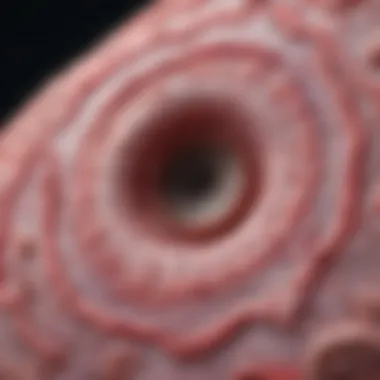
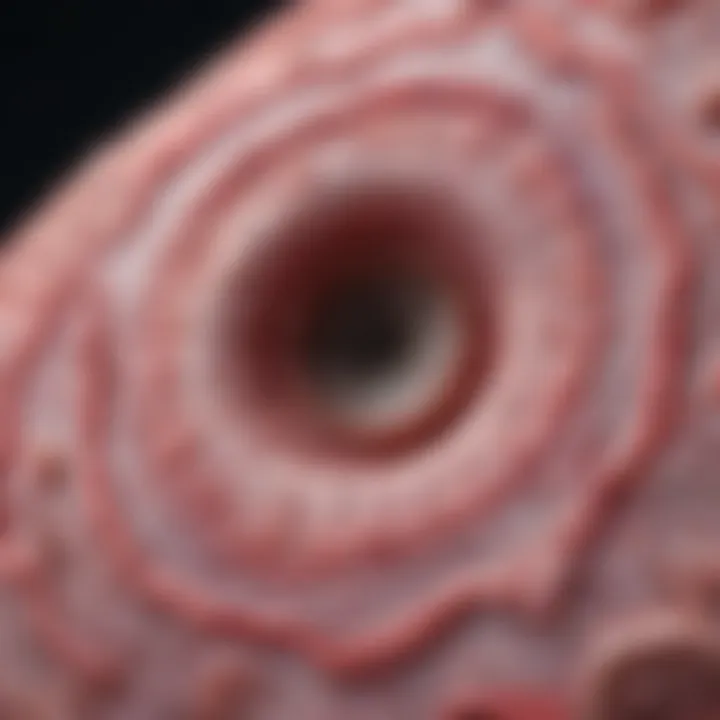
Intro
Rosai-Dorfman disease is often cast in shadows, being a rare disorder that many might not come across in their medical textbooks or clinical practices. Its very name can stir curiosity among medical students, researchers, and professionals who yearn for a deeper understanding of the intricate world of histiocytic diseases.
What sets this disease apart is how it manifests through the unexplained proliferation of histiocytes— immune cells that typically play a vital role in inflammation and response to infection. But in this condition, their uncontrolled growth can lead to complications that range from mild to severe, affecting various organs and tissues.
The aim of this article is to peel back layers, dissecting the pathology, etiology, and clinical manifestation of Rosai-Dorfman disease, creating a comprehensive guide for those who are keen to delve into its complexities.
Article Overview
Purpose of the Article
This article acts as a beacon for understanding Rosai-Dorfman disease, providing insights that reach far beyond mere definitions. We aim to give readers a thorough exploration of the mechanisms behind the disease, while also examining diagnostic and treatment options available. The portrayal of recent research findings adds an edge, ensuring that the discourse stays relevant.
Relevance to Multiple Disciplines
It’s crucial to note that the relevance of Rosai-Dorfman disease permeates various fields of study, including but not limited to:
- Hematology: Understanding this disease may provide clues about immune system disorders.
- Pathology: The investigation of histiocyte behavior reveals broader implications for similar diseases.
- Oncology: Since histiocytic disorders can mimic lymphomas, it’s important for oncologists to be aware.
Each of these areas benefits from a more nuanced understanding of this rare condition, urging collaboration among medical professionals, researchers, and educators.
Research Background
Historical Context
Rosai-Dorfman disease was first described in 1969 by Drs. Rosai and Dorfman, who noted a distinct clinical presentation in a set of patients. Initially, it was termed "sinus histiocytosis with massive lymphadenopathy," reflecting its hallmark feature of lymph node enlargement. Through the years, the understanding of the disease has evolved, shifting perceptions and classifications, leading to the term now widely used.
Key Concepts and Definitions
Understanding the terminology and concepts behind Rosai-Dorfman disease is essential for any meaningful discussion. Here are some key points:
- Histiocytes: These are immune cells that arise from monocytes, often functioning to eliminate foreign particles.
- Lymphadenopathy: Refers to the enlargement of lymph nodes, a common symptom of the disease.
- Proliferation: This term captures the excessive replication of histiocytes, which characterizes this condition.
The engagement with such foundational concepts allows for a scaffold upon which to build later sections discussing clinical presentations, diagnostic criteria, and management strategies.
"A deep understanding of Rosai-Dorfman disease is not just academic; it can aid in distinguishing between benign and reactive conditions and prompt timely interventions in affected individuals."
"A deep understanding of Rosai-Dorfman disease is not just academic; it can aid in distinguishing between benign and reactive conditions and prompt timely interventions in affected individuals."
Introducing readers to these essential terms sets the stage for a richer discourse in the following sections.
Preface to Rosai-Dorfman Disease
Rosai-Dorfman disease represents an intriguing area of study within hematologic disorders, primarily due to its unique manifestations and implications. Understanding this condition is essential not just for medical professionals, but also for students and researchers interested in the mechanisms of abnormal histiocyte proliferation. It challenges the traditional views on cancer and immune responses in human biology.
Histiocytes, a type of white blood cell, play a vital role in the immune system. When these cells proliferate abnormally, it can lead to a range of clinical symptoms that may baffle even seasoned practitioners. Observing the specific features of Rosai-Dorfman disease, alongside its differential diagnosis, empowers clinicians to discern the subtleties of symptoms that may overlap with other disorders.
- Importance of Early Recognition: Proper classification of this rare disease can greatly impact patient outcomes. Being informed about its signs can lead to timely diagnosis and potentially prevent more serious complications.
- Implications for Research: Ongoing research into the etiology and treatment of Rosai-Dorfman disease not only assists in patient management but also contributes broader knowledge to the field of hematology.
Overall, diving into Rosai-Dorfman disease provides valuable insights into histiocytic disorders. Understanding its intricacies will promote better communication among healthcare professionals and lend voice to future advancements in patient care and research.
Pathophysiology of Rosai-Dorfman Disease
Understanding the pathophysiology of Rosai-Dorfman disease is crucial as it sheds light on the underlying mechanisms that drive this rare condition. By dissecting the various biological processes involved, researchers can better appreciate how histiocytes proliferate and how the immune system interacts with this proliferation. This knowledge not only aids clinicians in diagnosing and treating the disease but also provides foundational insights for future research.
Mechanisms of Histiocyte Proliferation
Histiocytes, particularly the CD68+ histiocytes, are central to the pathology of this disease. They are a type of immune cell involved in the body’s response to various stimuli, including infections and inflammation. In Rosai-Dorfman disease, these histiocytes undergo an abnormal proliferation that is not entirely understood but is believed to be triggered by several factors.
The proliferation can be driven by foreign antigens, possibly linked to infectious agents or other environmental factors. One interesting aspect is the way histiocytes fail to undergo normal apoptosis, or programmed cell death, which allows them to accumulate excessively in lymph nodes and other tissues. This leads to the formation of distinctive masses that are characteristic of the disease.
In a recent study, researchers highlighted that several cytokines may play a part in promoting histiocyte growth. Increased levels of interleukin-6, for instance, have been observed in patients' samples, suggesting that these signaling molecules contribute to maintaining histiocyte survival and proliferation. Investigating these mechanisms at the biochemical level could lead to targeted therapies that might significantly alter the course of the disease.
Role of the Immune System
The immune system's role in Rosai-Dorfman disease is a complex dance. Typically, histiocytes act as defenders in the immune landscape by presenting antigens and stimulating T-cells. However, in this condition, the balance tilts. Not only do histiocytes proliferate uncontrollably, but they also alter the local immune environment.
This is exemplified by the phenomenon where histiocytes become quite effective in masking their malignant nature, effectively camouflaging themselves from other immune cells. This can hinder the body's ability to mount an effective immune response, making it challenging to treat the disease. Furthermore, the condition can lead to a state of immune dysregulation, where the body’s defense mechanisms are thrown off-kilter, making patients more susceptible to infections and other complications.
"Understanding the immune dysfunction in Rosai-Dorfman disease is key in developing future therapies that can restore normal immune activity."
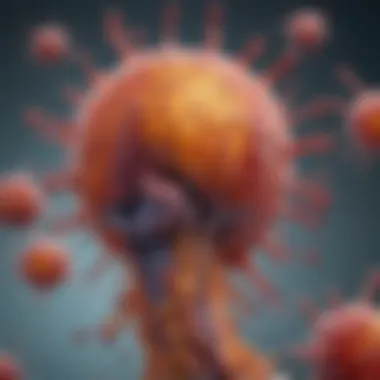
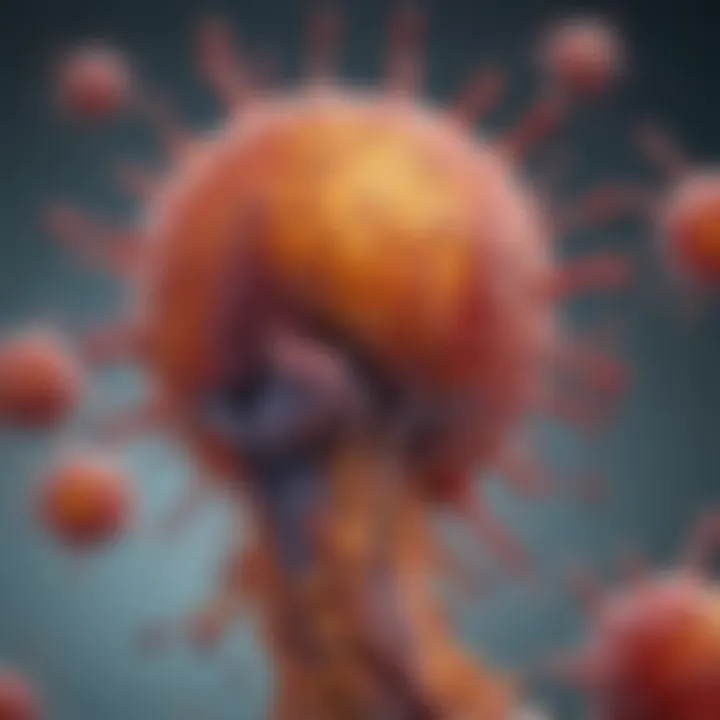
"Understanding the immune dysfunction in Rosai-Dorfman disease is key in developing future therapies that can restore normal immune activity."
In summary, the pathophysiology of Rosai-Dorfman disease provides a window into the complexity of histiocytic disorders. By unraveling the mechanisms of histiocyte proliferation and the immune system’s altered response, we unlock potential pathways for treatment and intervention. It’s an area ripe for exploration and holds promise for improving the lives of those affected by this puzzling disease.
Clinical Presentation
Understanding the clinical presentation of Rosai-Dorfman disease is crucial, as it directly influences both diagnosis and subsequent treatment plans. Patients often report a wide range of symptoms, which can be misleading and may mimic those associated with other diseases. Therefore, discerning the specific clinical features is vital for healthcare providers to establish an accurate diagnosis early on.
Common Symptoms
The symptoms of Rosai-Dorfman disease can vary largely between patients, but several common themes emerge. One primary symptom is lymphadenopathy, which refers to swollen lymph nodes. This may present in various locations, but cervical lymph nodes are often the most affected. Patients might notice that they have one or multiple swollen areas in their neck, which may not be painful.
Other frequent symptoms experienced include:
- Fever: Many individuals report intermittent fever.
- Weight Loss: Unintentional weight loss is also common.
- Night Sweats: Similar to fever, night sweats can disrupt sleep patterns.
- Fatigue: This is persistent and doesn’t seem to improve with rest.
- Skin Lesions: In some instances, lesions can arise on the skin, which can confuse matters even further.
These diverse symptoms make it easy for Rosai-Dorfman disease to be overlooked or misdiagnosed, often confused with more common conditions like infections or other lymphatic disorders.
These diverse symptoms make it easy for Rosai-Dorfman disease to be overlooked or misdiagnosed, often confused with more common conditions like infections or other lymphatic disorders.
Variability in Clinical Features
The variability in clinical features of Rosai-Dorfman disease adds another layer of complexity to its diagnosis. While some patients present primarily with lymphadenopathy, others might develop systemic signs. This variability can sometimes result in diagnostic challenges, particularly when the disease is atypical in presentation.
For instance, some patients might only have isolated cutaneous manifestations without any associated lymphadenopathy, complicating the clinical picture further. This variability can stem from individual patient factors, such as age and immune status or may be influenced by specific disease subtypes.
In summary, recognizing these signs is essential not only for diagnosis but also for ongoing patient management. Physicians must take a comprehensive history and physical exam, being mindful of the disease's tendency to present in varied manners among different individuals. Understanding the nuances of clinical presentation can equip healthcare providers with better tools for diagnosis and management, reducing the time it takes for patients to receive appropriate care.
Diagnosis of Rosai-Dorfman Disease
Diagnosing Rosai-Dorfman Disease can be quite the puzzle. With its rare nature and overlapping symptoms with other disorders, a specific and thorough approach is essential. This section will cover key components that make up the diagnostic landscape, reflecting on the significance of each element.
Clinical Evaluation
The first step in diagnosing Rosai-Dorfman Disease often begins with a detailed clinical evaluation. This evaluation encompasses a comprehensive medical history and a physical examination. Physicians tend to look for particular indicators like lymphadenopathy, which is notably the hallmark of the condition. They will ask questions about any unusual swellings, night sweats, or weight changes.
A careful approach here is important because the disease can exhibit symptoms that resemble other illnesses, like infections or malignancies. This leads to a more serious need to differentiate it from these other conditions. Physicians adapt a keen eye to subtle cues that could otherwise go unnoticed in a hurried setting. By recognizing patterns in symptoms, a clinician can better decide what additional testing might be appropriate.
Imaging Studies
In tandem with clinical observations, imaging studies rise to the forefront as critical tools in the diagnosis of Rosai-Dorfman Disease. They help in visualizing affected areas, supporting or refuting clinical suspicions. Each type of imaging has its perks which can steer the diagnostic journey.
CT Scans
CT scans provide a comprehensive view of the body’s structures. Their ability to yield cross-sectional images gives doctors a chance to spot enlarged lymph nodes, which are often prevalent in Rosai-Dorfman cases. The key characteristic of CT scans is their speed, allowing for quick results that are crucial in acute settings. Patients typically find this method non-invasive, making it a popular choice in clinical settings.
A unique feature of CT scans is their capability to view lymph nodes not only in the neck but also in other regions like the thorax and abdomen. However, some disadvantages exist, such as exposure to radiation, which can make other imaging modalities more appealing in certain situations.
MRI
On the other hand, MRI offers a different playing field. It excels in differentiating between soft tissue structures, making it extremely valuable when evaluating lymph nodes or adjacent tissues for potential infiltration. The key characteristic of MRI is its detailed imaging capabilities, providing clearer pictures without the radiation involved in CT scans.
A unique feature here is MRI’s efficacy in examining the CNS, which may also need scrutiny depending on the presentation of the Rosai-Dorfman case. Nevertheless, these scans can be time-consuming and may also present challenges for patients who experience anxiety in enclosed spaces.
Ultrasound
Ultrasound comes into play as a less invasive and dynamic method for real-time imaging. This technique is particularly useful in distinguishing solid masses from cystic lesions, which can sometimes be a crucial distinction in diagnosis.
The key characteristic of ultrasound is its ability to perform guided biopsies, allowing for tissue sampling without major surgical intervention. A unique feature is its availability and cost-effectiveness, making it a reasonable first step in many clinical contexts. However, its effectiveness can be limited by the operator’s skill and the patient’s body habitus.
Histopathological Examination
Following imaging, a histopathological examination solidifies the diagnosis. This involves analyzing tissue specimens to check for the distinct histiocyte proliferation characteristic of Rosai-Dorfman Disease. This step often confirms or refutes initial clinical suspicions, guiding treatment plans accordingly.
In summary, diagnosing Rosai-Dorfman Disease requires a multi-faceted approach, combining clinical evaluation, imaging studies, and histopathological examination to paint a complete picture.
In summary, diagnosing Rosai-Dorfman Disease requires a multi-faceted approach, combining clinical evaluation, imaging studies, and histopathological examination to paint a complete picture.
Differential Diagnosis
Differential diagnosis is a critical component in understanding Rosai-Dorfman disease, as it involves distinguishing this rare condition from other pathological disorders with overlapping symptoms or manifestations. Effective differential diagnosis is essential for accurate treatment planning and patient management. Given the uniqueness of Rosai-Dorfman, understanding how it compares to similar diseases can assist clinicians in making informed decisions rapidly.
The principal benefit of a well-executed differential diagnosis is that it reduces the risk of misdiagnosis, which is unfortunately common with rare diseases. Symptoms such as lymphadenopathy and fever could be indicative of various conditions such as infections, malignancies, or autoimmune disorders. Thus, parsing out these elements is key. Here are some specific considerations:
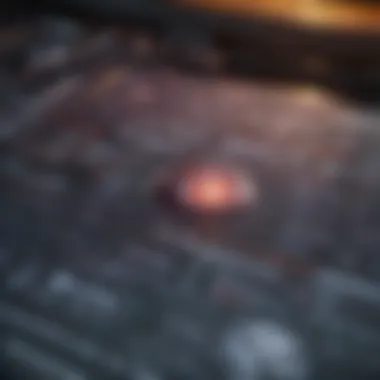
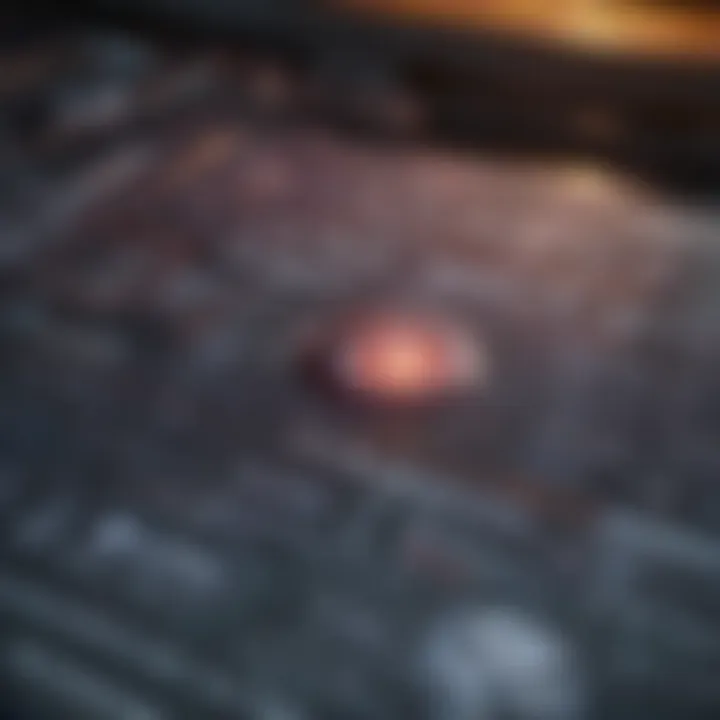
- Clinical symptoms: Identifying the specific clinical presentation can guide clinicians away from misleading initial assumptions.
- Patient history: A thorough review of the patient's medical history and any exposure to diseases or toxins can provide crucial insights.
- Laboratory tests: An array of lab tests, including blood tests and biopsies, can help confirm or rule out diseases.
- Imaging Studies: Techniques such as ultrasound or CT scans may reveal specific patterns distinct to Rosai-Dorfman disease compared to others.
Distinguishing from Other Disorders
Distinguishing Rosai-Dorfman disease from other disorders relies heavily on understanding its hallmark features. Common disorders that might lead to confusion include:
- Lymphoma: Both conditions can present with lymphadenopathy; however, lymphoma typically has atypical lymphocytes, while Rosai-Dorfman features histiocyte proliferation.
- Sarcoidosis: Similar symptomatology exists, but imaging studies will show granulomas in sarcoidosis, whereas Rosai-Dorfman is marked by different histological findings.
- Infections: Certain infections, such as tuberculosis or HIV, can also mimic the symptoms observed in Rosai-Dorfman disease, chiefly swollen lymph nodes and fever.
To effectively distinguish Rosai-Dorfman from these disorders, clinicians must leverage the results from histopathological examinations that reveal the characteristic R–D histiocytes, thus clarifying the diagnosis.
Case Studies and Clinical Comparisons
Evaluating case studies is indispensable in understanding the nuances in diagnosing Rosai-Dorfman disease. Case comparisons provide real-world context and insights into clinical presentations, treatment outcomes, and long-term prognoses. This practice also sheds light on atypical cases that may not adhere to classical symptoms.
For instance, one case study documented an individual initially misdiagnosed with lymphoma due to prominent lymph node involvement. Persistent symptoms warranted further investigation, leading to a definitive diagnosis of Rosai-Dorfman after histological assessment showed the distinctive histiocyte proliferation.
Benefits of Case Comparisons
- Insight into Variability: Each patient's experience with the disease can differ, providing evidence of the broad range of symptoms.
- Treatment Response Analysis: Some studies have analyzed how patients respond to corticosteroids compared to surgical interventions, contributing to the knowledge base.
- Long-term Outcomes: By understanding past cases, researchers can better anticipate potential complications or recurrences in similar patients.
In summary, a thorough exploration of differential diagnosis not only enhances understanding of Rosai-Dorfman disease but also fosters an in-depth knowledge that improves patient care and outcomes.
"Understanding the differences in clinical presentations can pave the way for more accurate diagnoses and optimized treatment plans."
"Understanding the differences in clinical presentations can pave the way for more accurate diagnoses and optimized treatment plans."
By emphasizing these aspects, we build a stronger framework for diagnosing Rosai-Dorfman disease amid a landscape full of potential misinterpretations.
Treatment Options
When dealing with Rosai-Dorfman disease, the treatment landscape is one where careful consideration is paramount. The ways to manage this rare disorder can vary widely, reflecting its heterogeneous nature but also the individual nuances present within each case. A tailored approach, in conjunction with the patient’s needs, is essential for the best possible outcomes. Choices range from watchful waiting to aggressive surgical interventions, making the understanding of each option vital for health professionals and patients alike.
Conservative Management
In certain cases of Rosai-Dorfman disease, particularly when it is asymptomatic, conservative management can be a reasonable first step. This approach involves monitoring the disease rather than pursuing immediate treatment. Patients may feel reassured knowing that often the disease can resolve on its own over time. It’s like watching a pot of water on the stove—if it’s only simmering, it’s sometimes better to let it be rather than rush to boil it.
Here are some key points regarding conservative management:
- Observation: Regular follow-ups to assess symptom progression and possible complications.
- Patient Education: Ensuring patients understand their condition helps alleviate anxiety and prepares them for any potential changes.
- Quality of Life: Focus on maintaining a good quality of life by addressing symptoms as they arise without unnecessary interventions.
Pharmacological Interventions
When conservative measures do not suffice, pharmacological interventions may come into play. These treatments aim to mitigate symptoms and address the disease's progression. Two primary categories often discussed are corticosteroids and chemotherapy.
Corticosteroids
Corticosteroids are frequently the first line of pharmacological intervention in Rosai-Dorfman disease. Their role typically hinges on reducing inflammation and controlling the proliferation of histiocytes. The key characteristic that makes corticosteroids appealing is their rapid onset of action. When symptoms flare up, they can be effective in calming the storm.
The unique feature of corticosteroids lies in their profound anti-inflammatory effects, which can provide substantial relief from symptoms.
However, there are advantages and disadvantages to consider:
- Advantages:
- Disadvantages:
- Immediate symptom relief.
- Ability to manage systemic manifestations effectively.
- Potential for significant side effects with prolonged use, including weight gain, diabetes, and altered immune response.
- Dependency or resistance in some cases may develop over time.
Chemotherapy
Chemotherapy is generally reserved for more severe manifestations or refractory cases of Rosai-Dorfman disease. It involves the use of cytotoxic drugs aimed at rapidly dividing histiocytes. Its key characteristic is its broad range of applicability across different types of diseases, not limited to just cancer. In this context, it highlights its versatility as a treatment option.
What sets chemotherapy apart is its potential to achieve a more lasting remission compared to corticosteroids alone.
Nonetheless, the possible drawbacks include:
- Advantages:
- Disadvantages:
- Effective in cases unresponsive to other treatments.
- May provide a long-term solution when corticosteroids fail.
- Risk of more severe side effects, such as nausea, fatigue, and suppression of the bone marrow.
- Frequent monitoring needed due to potential toxicities.


Surgical Approaches
In instances where the disease presents with localized masses—particularly those that cause obstruction or serious complications—surgical intervention may be warranted. Here, the aim is often to remove the affected lymph nodes or masses entirely. Surgical options can range from simple excisions to more extensive resections, depending on the disease's extent.
Understanding the role of surgery in Rosai-Dorfman disease is crucial since it can provide a definitive solution in selected cases.
Ultimately, the treatment of Rosai-Dorfman disease requires a multifaceted approach, drawing from conservative strategies, pharmacological therapies, or surgical interventions—each with its own set of considerations and benefits aimed at achieving the best possible outcome for patients.
Prognosis and Outlook
Understanding the prognosis and outlook of Rosai-Dorfman Disease (RDD) is pivotal for both patients and healthcare providers. It encompasses the expectations surrounding disease progression, the responses to treatments, and overall survival rates. Having this knowledge empowers patients to make informed decisions about their healthcare, while allowing healthcare professionals to tailor their approaches for managing RDD. As with many rare diseases, grasping the long-term implications helps demystify the journey ahead and prepare for various potential hurdles.
Long-term Outcomes
Long-term outcomes in RDD can vary widely. Many patients experience periods of remission, but some may face relapses or chronic symptoms. Based on current literature and case studies, it’s estimated that around 80% of individuals with RDD have a favorable prognosis, with successful management resulting in less severe manifestations over time. However, a subset of patients can expect complications due to the disease's systemic nature, particularly if the condition involves vital organs.
- Factors influencing outcomes include:
- Age of Onset: Younger patients often have a better prognosis due to the immune system's adaptability.
- Extent of Organ Involvement: Limited disease mostly confined to lymph nodes may lead to better outcomes compared to cases affecting multiple systems.
- Response to Initial Treatment: Those who respond positively to conservative management tend to enjoy prolonged periods of stability.
Patients may need continuous monitoring to catch any signs of changes early. Regular follow-ups, along with imaging and lab tests, remain essential. Often, healthcare providers will adopt a watchful waiting stance, especially in indolent cases, calling for treatment only when necessary.
Quality of Life Considerations
Quality of life (QoL) is a critical aspect in managing chronic diseases like Rosai-Dorfman. While some patients may achieve remission, others contend with ongoing symptoms that can affect daily living. This is where a holistic approach comes into play, addressing not only physical health but also emotional and psychological well-being.
- Key aspects impacting quality of life include:
- Physical Health: Chronic pain, fatigue, and other symptoms can significantly hinder daily activities.
- Psychological Support: Anxiety and depression can arise from living with a rare disease, making mental health support crucial.
- Social Engagement: The societal implications of living with a rare condition, such as isolation or misunderstanding by peers, can diminish one's sense of belonging.
Moreover, by fostering connections within support groups, patients can share experiences and coping strategies. Integrating occupational therapy or counseling into the care regimen can provide additional tools to manage challenges effectively.
"The journey with Rosai-Dorfman is not just medical; it's emotional, and it requires a comprehensive strategy to ensure the best possible quality of life."
"The journey with Rosai-Dorfman is not just medical; it's emotional, and it requires a comprehensive strategy to ensure the best possible quality of life."
In summary, while the prognosis for many with RDD is promising, the individual experience can differ greatly based on a plethora of factors. Acknowledging these nuances allows for better preparedness and understanding among patients and their support networks, ultimately leading to better health outcomes.
Current Research and Future Directions
Exploring the intricate landscape of Rosai-Dorfman disease necessitates an ongoing examination of current research trends and future directions. This urgency stems not just from the rarity of the disease itself, but also from the complex mechanisms that underpin the pathophysiology and clinical manifestations. As we peel back the layers of understanding, we find the road ahead marked by potential advancements and challenges that demand our attention.
Recent Advances in Understanding
In recent years, several studies have shed light on Rosai-Dorfman disease, changing the way we understand its etiology and presentation. Researchers are actively investigating genetic mutations and immune responses that play a critical role in histiocytic proliferation.
- One study highlighted the insights gained from analyzing the histological features in tissue samples, where the presence of specific proteins was linked to disease severity.
- Another research endeavor centered around the role of inflammatory cytokines, suggesting that an aberrant immune response might significantly contribute to the proliferation of histiocytes.
These findings underscore the complexity of the disease. Often a challenge lies in the variability of symptoms displayed by patients, making it imperative for ongoing research to refine diagnostic criteria and treatment approaches. Understanding the relationship between environmental factors and disease onset also presents a significant area of exploration. As one researcher succinctly put it, "Understanding the why often leads us to new treatments."
Emerging Technologies in Diagnosis and Treatment
The evolution of diagnostic methodologies and treatment modalities is pivotal for improving outcomes in Rosai-Dorfman disease. Several technologies show promise for better identification and management of the condition.
- Next-Generation Sequencing (NGS): This technology provides comprehensive genomic information, facilitating personalized medicine strategies for affected individuals. By identifying specific mutations, clinicians can tailor treatments that fit the particular genetic makeup of a patient.
- Advanced Imaging Techniques: Innovations in imaging, such as high-resolution MRI and PET scans, are allowing for earlier detection and more precise monitoring of disease progression. With these advancements, doctors can observe changes in histiocytic lesions over time, improving decision-making processes regarding interventions.
Moreover, the rise of telemedicine has brought innovative approaches to care delivery, allowing specialists to consult from afar and provide insights into patient management strategies. These tools not only enhance diagnostic capabilities but also facilitate collaboration among healthcare teams that are so essential for treating such complex diseases.
In summary, the current research landscape of Rosai-Dorfman disease is fertile with possibilities for advancements in our understanding and treatment of this obscure condition. Continued exploration is crucial to unraveling the complexities involved, providing hope for affected individuals and medical professionals alike in their quest for effective management strategies.
Ending
The significance of concluding an article on Rosai-Dorfman disease cannot be overstated. This section serves as the final piece of a puzzle, wrapping together the earlier discussions on the complexities of this rare histiocytic disorder. It encapsulates essential insights, reflecting on the multifaceted nature of the disease and its impact on patients and healthcare systems.
Summary of Key Insights
Throughout the article, we explored the intricacies of Rosai-Dorfman disease, which can be daunting to both patients and medical professionals alike. The key insights gathered include:
- Understanding the Disease: Knowledge of the pathophysiology is crucial, as it helps in identifying how histiocyte proliferation occurs and interacts with the immune system.
- Diverse Clinical Presentation: One of the standout features of Rosai-Dorfman disease is its variability in symptoms, underscoring the need for tailored clinical evaluations.
- Diagnostic Challenges: The careful integration of clinical assessment, imaging studies, and histopathological evaluation is vital for accurate diagnosis. This multifaceted approach is critical as misdiagnosis can lead to inappropriate management.
- Treatment Spectrum: Treatment options can range from conservative management to more aggressive pharmacological interventions. Understanding when to apply each modality is essential for optimal patient outcomes.
- Long-term Outlook and Quality of Life: The prognosis varies, with some patients experiencing resolution while others may face chronic manifestations. Quality of life considerations are paramount in treatment planning.
This summary reinforces that Rosai-Dorfman disease is far from a one-size-fits-all condition; it requires ongoing research and clinical attentiveness.
Final Thoughts on Rosai-Dorfman Disease
"The understanding and treatment of rare diseases like Rosai-Dorfman require a synergy of knowledge, experience, and compassion."
"The understanding and treatment of rare diseases like Rosai-Dorfman require a synergy of knowledge, experience, and compassion."
In summary, fostering awareness and continued inquiry into Rosai-Dorfman disease not only benefits the medical community but can profoundly impact the lives of those affected by this rare condition. Engaging with current research and actively sharing findings can undoubtedly enhance our collective understanding, making future strides toward more effective therapies and support systems. Ultimately, this journey is about the patients and how we, as a community, can work together to bring about better outcomes.



